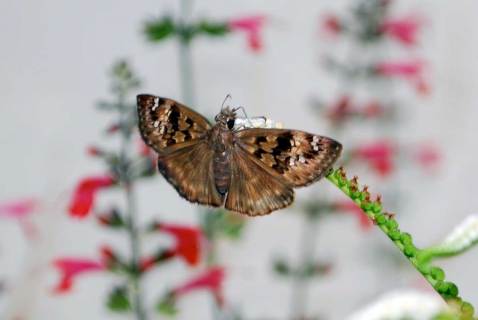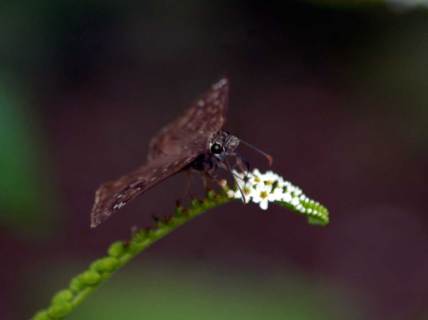These small brown butterflies, genera Ephyriades and Erynnis, are so confusing to butterfliers that, were it not for the skippers, I would call these groups the equivalent of the LBJs (little brown jobs) that so vex birders.
One popular field guide author calls this group
a challenging complex. Most are very similar; the problem is confounded by regional variations, differences between sexes, and individuals in worn condition.(Kaufman).
Another points out that
many species are so similar that it is common to find misidentified museum speciments. Thus the astute observer will often say, “That’s a duskywing.”
In Florida we have only seven of the nineteen North American species to sort through: Juvenal’s (Erynnis juvenalis), Horace’s (E. horatius), Sleepy (E. brizo), Wild Indigo (E. baptisiae), Zarucco (E. zarucco), and Florida (Ephyriades brunneus). In south Florida, our task is even simpler: Four of these are pretty well range-restricted to our north, and one of the remaining three is pretty much restricted to the Keys and Monroe County, so, here in Boca Raton at least, our issue resolves neatly down to one question: is it Horace’s or Zarucco?
In all my guides, they are listed as equally abundant (3 or more broods), but the Horace’s is pointed out as being widespread and abundant. while Zarucco is simply listed as common. Please understand that I have only limited experience as a butterflier, so perhaps I’m being overconfident, but I can confidently say that every single duskywing I have ever tried to identify has turned out to be a Horace’s. Of course, I only ID them from the photos, never in the field.
Here are the two most recent examples from the new house; please don’t prove my confident assertion from the previous paragraph to be unjustified!
Gee! This is pretty easy, no?


